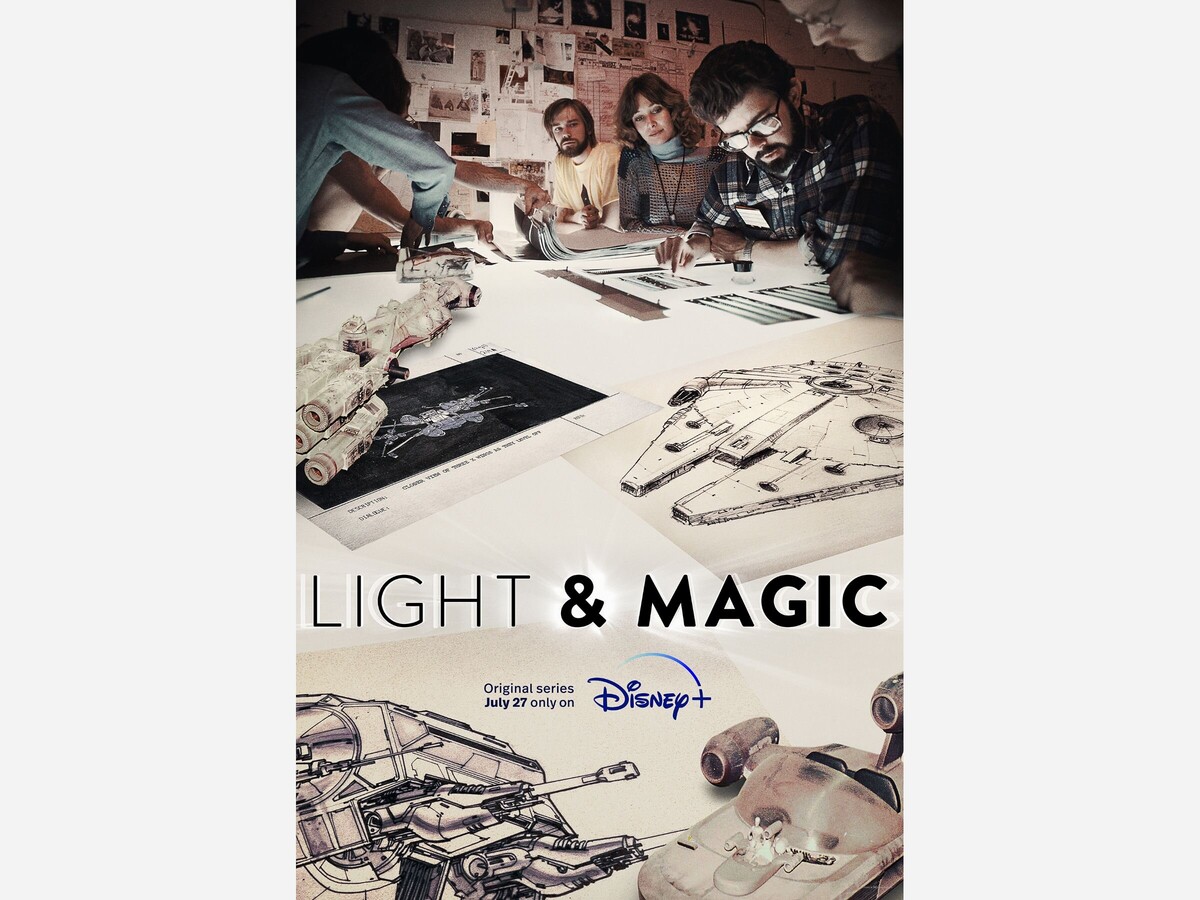Image

Studios that make large tentpole franchises have always commissioned thinly-veiled propaganda pieces that were designed to make the studios, filmmakers, and other people involved in the project look like geniuses for coming up with the idea. This year saw the arrival of The Offer on Paramount+ that chronicled and dramatized the making of The Godfather and now Disney+ has released a new documentary about the impact of Industrial Light and Magic (ILM), George Lucas’ visual effects company he founded in 1975, on the film industry. The documentary is substantially better than Empire of Dreams (also available on Disney+ though was originally offered in the 2004 DVD box set of the original trilogy of Star Wars) and, while it does toe a company line, does not overstate the colossal impact that ILM has had over the last fifty years.
To clarify off the bat, this is a Disney+ documentary about a subsidiary of Lucasfilm which is in and of itself a subsidiary of the Walt Disney Company. As such, this documentary, especially the early episodes about Lucas’s origins in the film industry on THX 1138 (which is available to watch on HBOMax) and American Graffiti. Much like how the launch title The Imagineering Story did not dive into the political dealings of Disney in Anaheim and Florida, as well as the marketing cold war that opened up between Disney and Universal during the 70s and 80s, Light and Magic takes a few shots more than necessary at Warner Brothers for letting Lucas get away and have Star Wars made at Fox. It is especially highlighted when this portion of the documentary talks about Lucas’ relationship with Francis Ford Coppola, especially considering at the same time Coppola would similarly leave Warner Brothers to make Patton at Fox and The Godfather at Paramount but this is barely mentioned. More time is spent discussing Lucas’ role in Pixar before selling it to Steve Jobs and John Lasseter than is spent discussing the lasting impact of his friendship with Coppola and the rest of the early-1970s new wave of directors. If one is interested in this, they should check out Peter Biskind’s book Easy Riders, Raging Bulls which dives into this topic much deeper (Barnes and Noble almost always has a copy on hand).
One would expect a documentary about ILM to focus mostly on Star Wars and Raiders of the Lost Ark, however the series also dives into a lot of the movies that would come after that ILM would work on that drove improvements to the technology. Star Trek II: The Wrath of Khan is touched on for example, because ILM did the digital simulation for the sequence that showed how the genesis device worked. Large chunks of episodes are devoted to The Abyss and Terminator 2: Judgement Day, because of how much digital visual effect work went into creating these two films and how much they pushed the pushed the medium forward. That said, it would have been interesting to see the documentary dive deeper on Cameron’s later films, specifically Avatar and how that advanced motion capture technology rather than wrapping up largely on Jurassic Park as if technology has not progressed in any major way since 1993. This is especially true since the behind-the-scenes series about The Mandalorian dove pretty deeply on Stagecraft, a massive physical sound stage made of screens that orient to any camera pointed at them to create the realistic looking backgrounds that one sees in that show, Obi-Wan Kenobi, Thor: Love and Thunder, and the forthcoming Guardians of the Galaxy Vol. 3 and Netflix’s Avatar: The Last Airbender series.
The other thing that the show does not dive nearly deep enough into is the accessibility tools that came about as a result of ILM. Industry standard graphic art software Photoshop was invented by Thomas and John Knoll during their time working at ILM before they sold it to Adobe, but this is hardly touched on. On top of this, the impact of the digital nonlinear editor Avid is barely addressed and their advancements in the field led to the rise of the modern independent film community with software like DaVinci Resolve from Blackmagic Design (on a personal note, my weapon of choice for editing), ProTools from Avid, Premiere Pro from Adobe, and Final Cut Pro X from Apple all being offered as affordable options to help train the next generation of editors and filmmakers.
If someone is interested in visual effects, this is the documentary for them. Key effects from famous movies are explained in a way that is like a magic trick being explained like the house imploding in Poltergeist and the faces melting when the Ark of the Covenant is opened in Raiders of the Lost Ark. The thing that this series does well is highlight what it was that made people turn to the industry and lay out their personal journeys in that light. There is a real heartfelt moment about halfway through when James Cameron talks about leaving Star Wars in 1977 and immediately changing careers to be a director. At the end of the day, it is a documentary by Disney about a Disney subsidiary, but it is well made and not the worst example of a company making a documentary to make themselves look better because the impact of ILM on the film industry is unparalleled.
Final Rating: 9/10